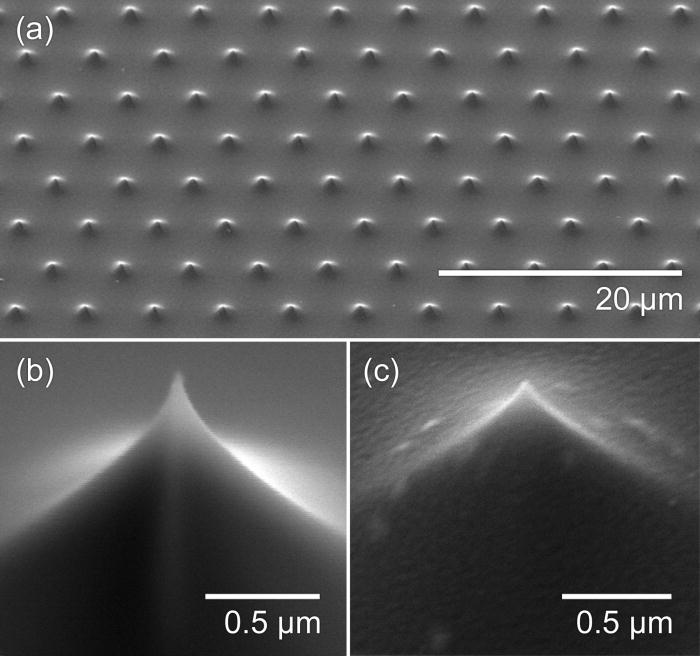Nanoemitters: Tiny Light Sources with Big Potential
What are Nanoemitters?
Nanoemitters are nanoscale structures that can emit light when excited by an external energy source. These tiny light sources have gained significant attention in recent years due to their unique properties and potential applications in various fields, including optoelectronics, biosensing, and quantum computing.

Types of Nanoemitters
Several types of nanostructures have been explored as nanoemitters, each with unique emission properties and applications:
- Quantum Dots: Quantum dots are semiconductor nanocrystals that exhibit size-dependent emission properties. By tuning their size and composition, the emission wavelength of quantum dots can be precisely controlled, making them attractive for applications in displays, lighting, and bioimaging.
- Carbon Nanotubes: Single-walled carbon nanotubes (SWCNTs) have been demonstrated as efficient nanoemitters in the near-infrared region. Their unique electronic structure and high photostability make them promising for applications in telecommunications, biosensing, and in vivo imaging.
- Plasmonic Nanoparticles: Metal nanoparticles, such as gold and silver, can support localized surface plasmon resonances that enhance light emission from nearby emitters. By coupling plasmonic nanoparticles with fluorescent molecules or quantum dots, researchers have achieved enhanced emission intensity and directional control.
Advantages of Nanoemitters
Nanoemitters offer several advantages over conventional light sources:
- High Efficiency: Nanoemitters can exhibit quantum efficiencies up to 90%, significantly higher than traditional light sources like incandescent bulbs (∼5%) and fluorescent lamps (∼25%). This high efficiency makes nanoemitters attractive for applications that require bright and energy-efficient light sources.
- Tunable Emission: The emission properties of nanoemitters can be easily tuned by modifying their size, shape, and composition. For example, quantum dots can be engineered to emit light across the visible and near-infrared spectrum with a narrow emission bandwidth (∼20-30 nm), compared to the broad emission of traditional phosphors (∼50-100 nm). This tunability allows for the precise control of emission wavelength, enabling the development of nanoemitters for specific applications.
- Integration with Nanophotonics: Nanoemitters can be easily integrated with nanophotonic structures, such as waveguides and photonic crystals, to create compact and efficient light sources. This integration enables the development of on-chip light sources for applications in optical computing and communication, with the potential for higher data transfer rates and lower power consumption compared to traditional electrical interconnects.
- Multiplexing Capability: Different types of nanoemitters can be combined to create multiplexed systems that emit light at multiple wavelengths. This multiplexing capability is particularly useful for applications in biosensing and imaging, where multiple analytes or targets need to be simultaneously detected. Nanoemitters can enable multiplexed detection with higher sensitivity and specificity compared to traditional fluorescent probes.
Applications of Nanoemitters
Nanoemitters have found applications in various fields, leveraging their unique emission properties:
Optoelectronics and Displays
Quantum dot-based nanoemitters have been widely explored for applications in displays and lighting. Quantum dot light-emitting diodes (QLEDs) offer advantages such as high color purity, wide color gamut, and high efficiency compared to conventional LED technologies. Additionally, nanoemitters can be used to create compact and efficient on-chip light sources for optical interconnects and computing.
Biosensing and Bioimaging
Nanoemitters have shown great potential in biosensing and bioimaging applications. Quantum dots and carbon nanotubes have been used as fluorescent probes for the detection of biomolecules, such as proteins and nucleic acids. Their high photostability and multiplexing capability enable long-term and multicolor imaging of biological processes. Furthermore, near-infrared emitting nanoemitters, such as SWCNTs, have been explored for deep-tissue imaging and in vivo sensing applications.
Quantum Technologies
Nanoemitters have emerged as promising components for quantum technologies, such as quantum computing and quantum communication. Single-photon sources based on quantum dots or color centers in diamond have been developed for applications in quantum key distribution and quantum information processing. These nanoemitters offer advantages such as high single-photon purity, indistinguishability, and on-demand emission, which are crucial for realizing scalable quantum technologies.
Challenges and Future Perspectives
Despite the significant progress in nanoemitter research, several challenges need to be addressed for their widespread application. One of the main challenges is the scalable and reproducible fabrication of high-quality nanoemitters with precise control over their emission properties. For example, the production of quantum dots with uniform size and composition remains a bottleneck for their large-scale implementation in displays and lighting applications.
Another challenge is the efficient integration of nanoemitters with photonic components and the development of efficient excitation and collection schemes. The coupling efficiency between nanoemitters and waveguides or cavities is often limited by the mismatch in their optical modes and the difficulty in precisely positioning the nanoemitters. Researchers are exploring advanced fabrication techniques, such as deterministic placement and self-assembly, to overcome these integration challenges.
Future research in nanoemitter development will focus on the exploration of new materials and nanostructures with enhanced emission properties. The integration of nanoemitters with advanced photonic structures, such as metamaterials and topological insulators, will enable the creation of novel light sources with unprecedented functionalities. Furthermore, the development of electrically driven nanoemitters and their integration with CMOS-compatible fabrication processes will be crucial for their practical implementation in optoelectronic devices.
